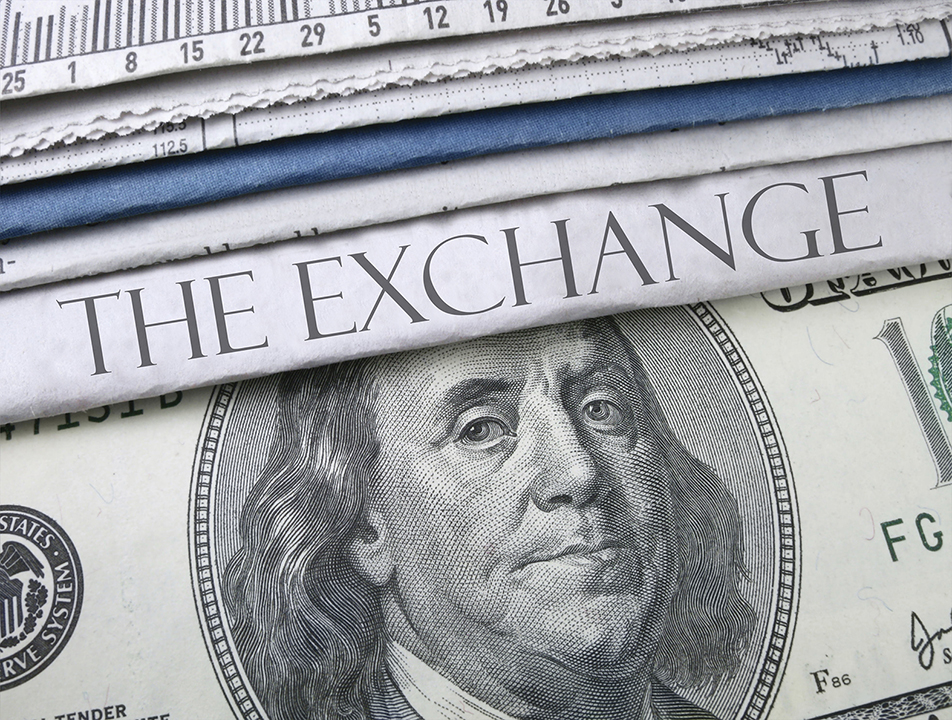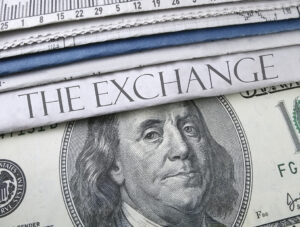The views expressed in this article represent the opinions of the author and do not necessarily reflect the opinions of the Chattanooga Area Chamber of Commerce, its staff, or its board of directors.
Growing up in West Virginia, I witnessed firsthand how economic barriers like high taxes and regulations can stifle communities, igniting my interest in why some regions prosper while others languish. This led me to public choice economics, pioneered by Tennessee native James Buchanan, who earned a Nobel Prize for applying economic principles to political behavior. Public choice theory examines how self-interested actions by politicians, voters, and interest groups shape policies, often resulting in outcomes that benefit narrow constituencies at the expense of broader society—a phenomenon termed government failure. It strips away romantic notions of politics, revealing it as a marketplace of political exchange.
In my previous column, I outlined the economic shortcomings of tariffs. Here, drawing on public choice, I explore why these policies endure despite evidence of their harm, such as the August 2025 jobs report showing only 22,000 new positions added amid ongoing economic pressures. This isn’t a partisan critique but an analysis of incentives driving policies that affect Chattanooga’s manufacturers, exporters, and families. Tariffs, often promoted as tools for job creation, exemplify how political self-interest distorts markets and hampers prosperity.
Public Choice 101: Politics as Self-Interest
Public choice theory extends economic logic to non-market settings, positing that individuals in politics—politicians, voters, and bureaucrats—pursue their own interests, much like consumers and firms in competitive markets. In voluntary market exchanges, self-interest typically leads to mutual benefits through specialization and trade. Politics, however, operates differently: decisions are coercive, with winners and losers determined by concentrated power rather than mutual consent. This asymmetry often produces policies that favor vocal minorities over diffuse majorities, as costs are hidden while benefits are spotlighted.
Politicians prioritize vote maximization over societal welfare, leading to policies like tariffs that deliver targeted gains to supporters. Consider the 2025 tariffs: a 10% baseline on all imports, 25% on those from Canada and Mexico, and 10% on China (with a prior escalation to 145% paused until November). These shield domestic producers like U.S. Steel from foreign competition, granting them market share and higher prices—visible wins for those groups. Yet costs, such as elevated input prices for downstream industries and retaliatory measures abroad, are dispersed and less salient, allowing such policies to persist despite net economic losses.
Public choice explains this persistence: the “seen” effects (like factory expansions) dominate public perception, while “unseen” repercussions (such as export job losses) fail to mobilize opposition.
Concentrated Benefits, Dispersed Costs
A core insight of public choice is that policies endure when benefits accrue to organized groups while costs are spread thinly across the population, reducing incentives for widespread resistance. Tariffs exemplify this: protected industries reap outsized rewards, funding lobbying efforts that amplify their voice, whereas consumers and competing sectors bear incremental burdens too small to warrant collective action.
This explains their persistence. Aluminum producers, for instance, benefit from reduced imports, boosting revenues and employment in visible ways. In contrast, higher costs filter down to manufacturers like those in Chattanooga’s food processing sector, raising expenses for packaging and eroding competitiveness.
Retaliatory tariffs exacerbate these losses. Tennessee’s whiskey exporters, including Jack Daniel’s, experienced a 60% sales drop due to Canada’s boycotts and countermeasures, threatening local jobs that receive far less attention than protected gains elsewhere.
Historically, the Smoot-Hawley Tariff Act of 1930 illustrates this: it enriched specific lobbies with average rates of 59% on over 20,000 goods, but price increases (up to 20%) and export retaliation (slashing U.S. farm incomes by 30%) deepened the Great Depression, as detailed in Douglas Irwin’s work.
Public choice theory predicts such outcomes because incentives drive politicians to cater to concentrated interests, perpetuating policies that appear beneficial but cause social harm.
Rent-Seeking: Chasing Political Favors
Building on concentrated benefits, public choice introduces rent-seeking: the expenditure of resources to obtain government-granted privileges, such as tariffs, that create “rents” (unearned profits). Unlike market competition, where innovation drives gains, rent-seeking diverts funds from value-creating activities to political influence, imposing losses on the economy. In 2024 alone, U.S. lobbying reached $4.2 billion.
Tariffs fuel this behavior. Aluminum firms like Alcoa invest in advocacy to secure barriers, gaining market dominance at the expense of users like automakers. Ford reported $800 million in tariff-related costs in Q2 2025, equivalent to funding 11,000 new jobs if redirected productively, while General Motors faced $1.1 billion in the same period, endangering 14,000 jobs. Ironically, the auto industry is one of the industries tariffs are supposed to help.
The 2018 steel tariffs eliminated 75,000 jobs in downstream manufacturing due to higher input costs and reduced demand, while saving 1,000 jobs in the steel sector. Politicians, seeking electoral support from these rent-seekers, accommodate them, creating a feedback loop where policy favors cronies over efficient resource allocation. This wastes resources and entrenches inefficiencies, as firms prioritize political capital over market competition.
Trade Deficits: A Political Fallacy
Public choice illuminates how misconceptions like trade deficits are weaponized for political gain. Economically, a trade deficit—imports exceeding exports—mirrors a capital surplus, where foreigners invest in U.S. assets, signaling confidence in American growth and financing consumption without net loss. Yet politicians, including Trump, frame deficits as zero-sum defeats, blaming foreign “unfairness” to rally voters and justify protectionism.
This persists by mobilizing industries and workers for political support, obscuring the benefits of investment inflows. Voters respond to the visible story of jobs “stolen” abroad, ignoring how deficits reflect robust domestic demand and foreign capital attraction. This fallacy, exploited for votes, fuels tariffs that distort trade without addressing underlying economic realities.
Tariffs Fail, Markets Deliver
Economics evaluates policies not by stated intentions but by outcomes. Taking the administration’s goals for the 2025 tariffs—boosting jobs, revenue, trade balances, and national security—as given, economic reasoning reveals that tariffs fail to deliver and often conflict with one another.
First, tariffs do not create net jobs. While they shield specific sectors, fostering visible expansions like Micron Technology’s $200 billion U.S. chip investment (announced amid tariff pressures), the losses elsewhere outweigh gains. Higher input costs harm downstream industries, and retaliation curtails exports, as seen in Tennessee’s apparel sector facing losses from Mexico’s countermeasures.
Politicians often blame international trade for manufacturing job losses, but the decline since the 1970s stems primarily from automation and technological advancements. Despite fewer jobs, U.S. manufacturing output has surged, producing more goods than ever, showcasing market-driven productivity gains.
Second, tariffs’ revenue potential is limited and self-defeating. The Tax Foundation estimates the 2025 tariffs could raise $2.3 trillion in revenue over a decade, but at a $400–650 billion growth loss due to distortions. High rates (e.g., 50% on aluminum) intended to boost domestic production reduce import volumes, thereby decreasing revenue from tariffs. If revenue maximization requires sustained imports, then job protection via import suppression becomes unattainable. These goals conflict: success in one undermines the other, as shifting consumption domestically cuts the revenue stream from tariffs.
Third, tariffs exacerbate rather than reduce trade deficits. By raising import prices, they temporarily curb inflows, but retaliation and higher domestic costs shrink exports more, widening the gap. Foreign investment, which balances trade deficits, declines amid uncertainty, turning a non-issue into economic harm.
Finally, tariffs fail to enhance national security. Tariffs distort market signals, encouraging investment in protected industries even when they’re less efficient than foreign alternatives. This diverts capital and labor from more productive sectors, weakening the overall economy, which is the foundation of national security. Tariffs may prop up industries like steel or aluminum, but they don’t guarantee the production of defense-specific goods. For instance, 2025 steel tariffs benefited firms like U.S. Steel, but much of their output serves commercial rather than military needs, while higher costs hurt defense contractors reliant on affordable inputs. Open markets foster interdependence, reducing the likelihood of conflict with trading partners and ensuring access to diverse supply sources.
Public choice reveals why tariffs persist: concentrated benefits for protected industries and political optics outweigh diffuse costs borne by consumers and exporters. Governments, swayed by rent-seeking and electoral incentives, are ill-equipped to engineer jobs or security. Markets, through voluntary exchange, allocate resources efficiently, driving innovation, employment, and prosperity. By removing barriers, Chattanooga’s firms can specialize, trade, and thrive, fostering greater prosperity than politically driven protections.
Claudia Williamson Kramer is the Scott L. Probasco, Jr., Distinguished Chair of Free Enterprise, Professor of Economics, and Executive Director of the Center for Economic Education at UTC.
To hear more from Dr. Kramer, listen to her latest conversation on WUTC here: https://shorturl.at/CyWM0







